Dear Reader, in this age of AI created content, please support with your goodwill someone who works harder to provide the human-made. Sign up at the top of the lefthand column or bottom of this page. You will receive my hand illustrated monthly newsletter RESTORE NATURE and access to the biodiversity garden design course as I write...and nothing else, I respect your time. I am also removing the advertizing as best I can as its become intrusive inappropriate and pays me nothing.
Combine earth worm farming with gray water recycling for fat earthworms
We've been earth worm farming for about two decades now. I read that earthworms are able to ingest and digest pathogens, so I thought it would be a good idea for the gray water to pass through an earthworm filter. This worm bin takes the out flow straight from the kitchen sink, its only supply. As you can see the worms love it.
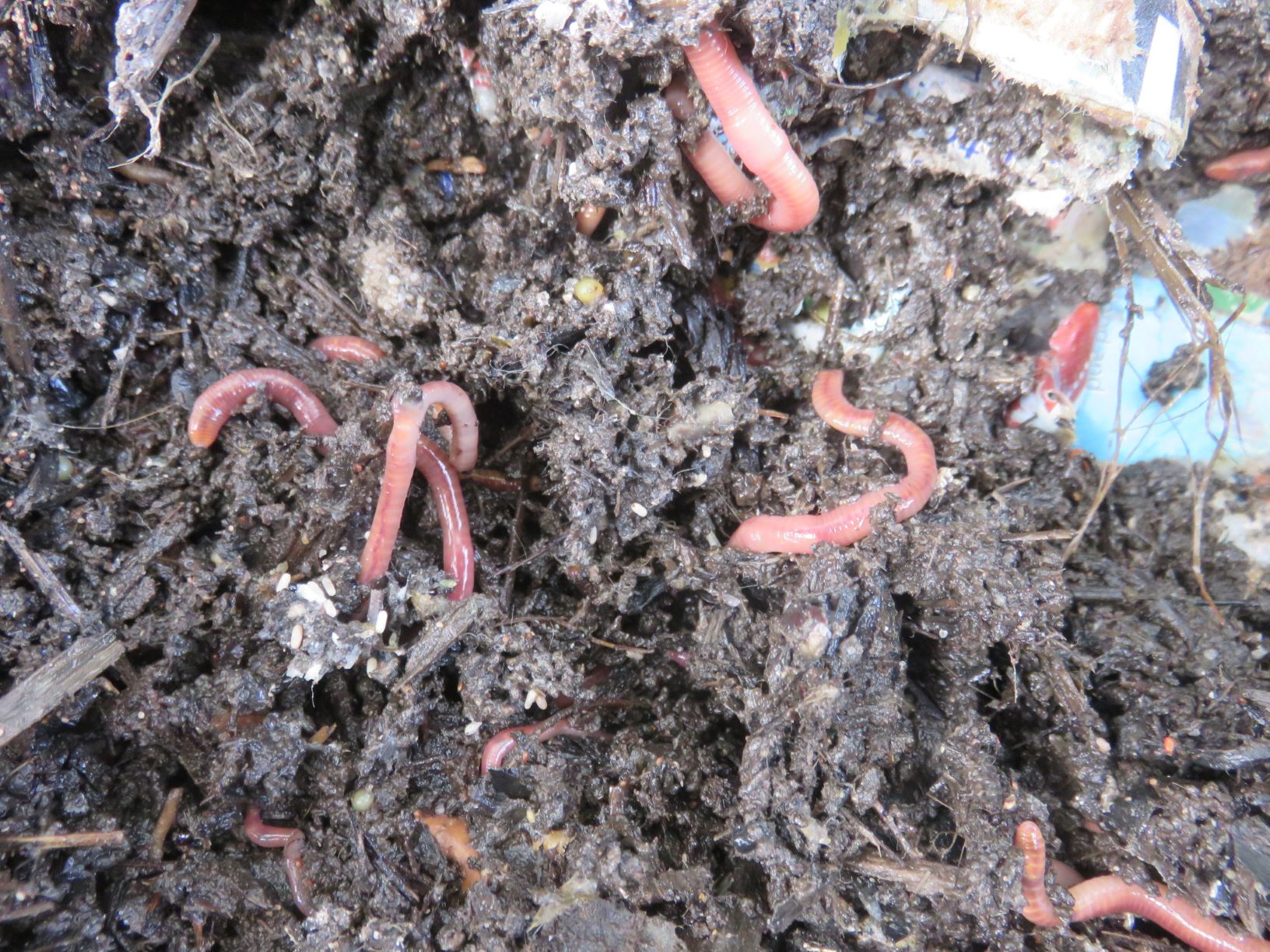 worms in my earth worm filter this morning
worms in my earth worm filter this morningHow to introduce earth worm farming into your gray water recycling system
To create this kind of filter, re-plumb your kitchen sink outlet outside the house. This is fully legal. We are allowed to adapt our outside plumbing to save water in the Cape. Lead the water into a worm farm tray. I found two of these lovely basins in a local Chinese store. They fitted perfectly into the top of the blue barrel I wanted to use as a gray water surge tank to take excess flow. You can see the gray plastic is worm bin, the blue is barrel of course, and the black lid came with the barrel. It made a perfect lid for the basin.
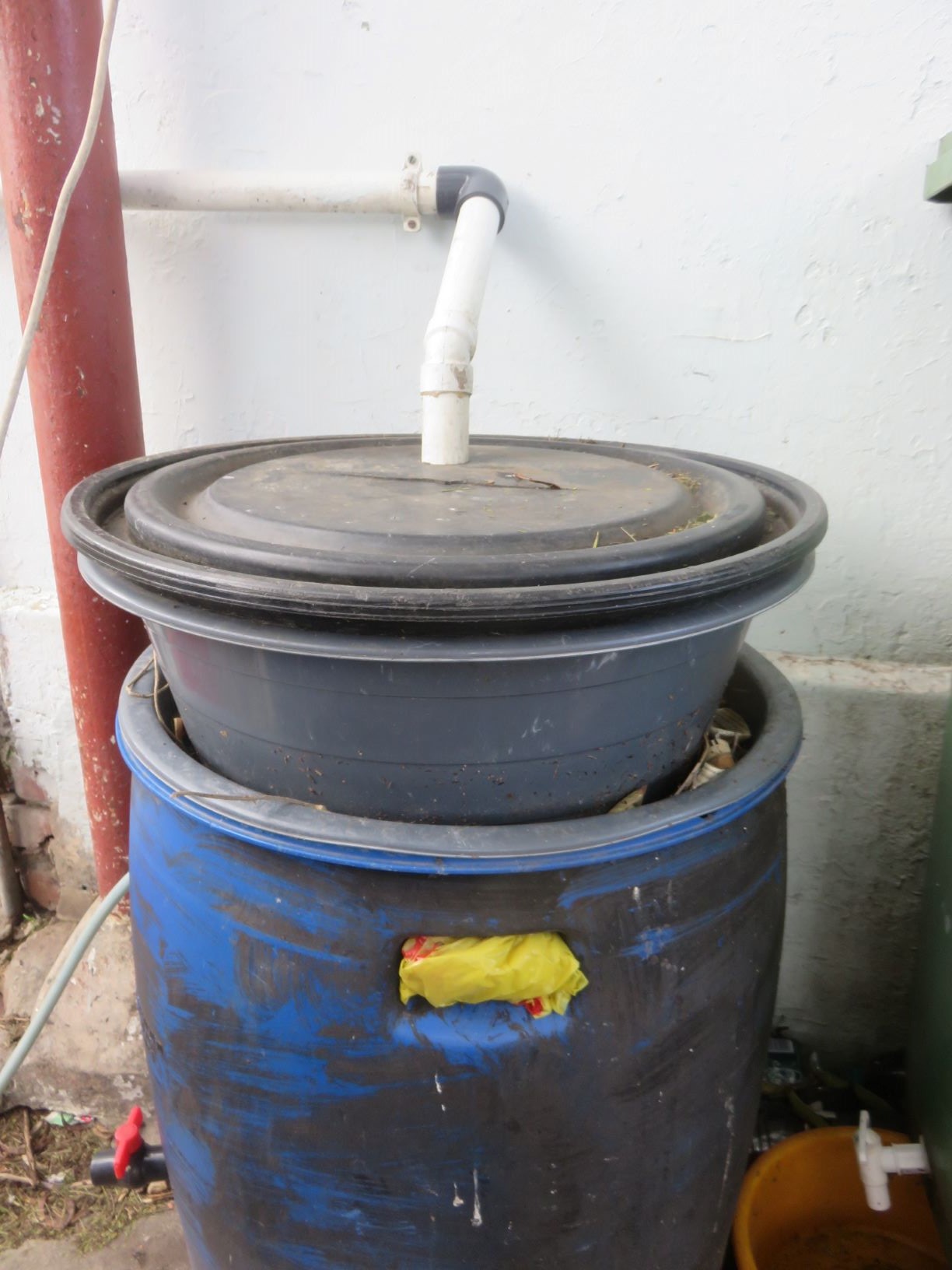 barrel, bowls, lid and yellow checkers packet barrel, bowls, lid and yellow checkers packet |
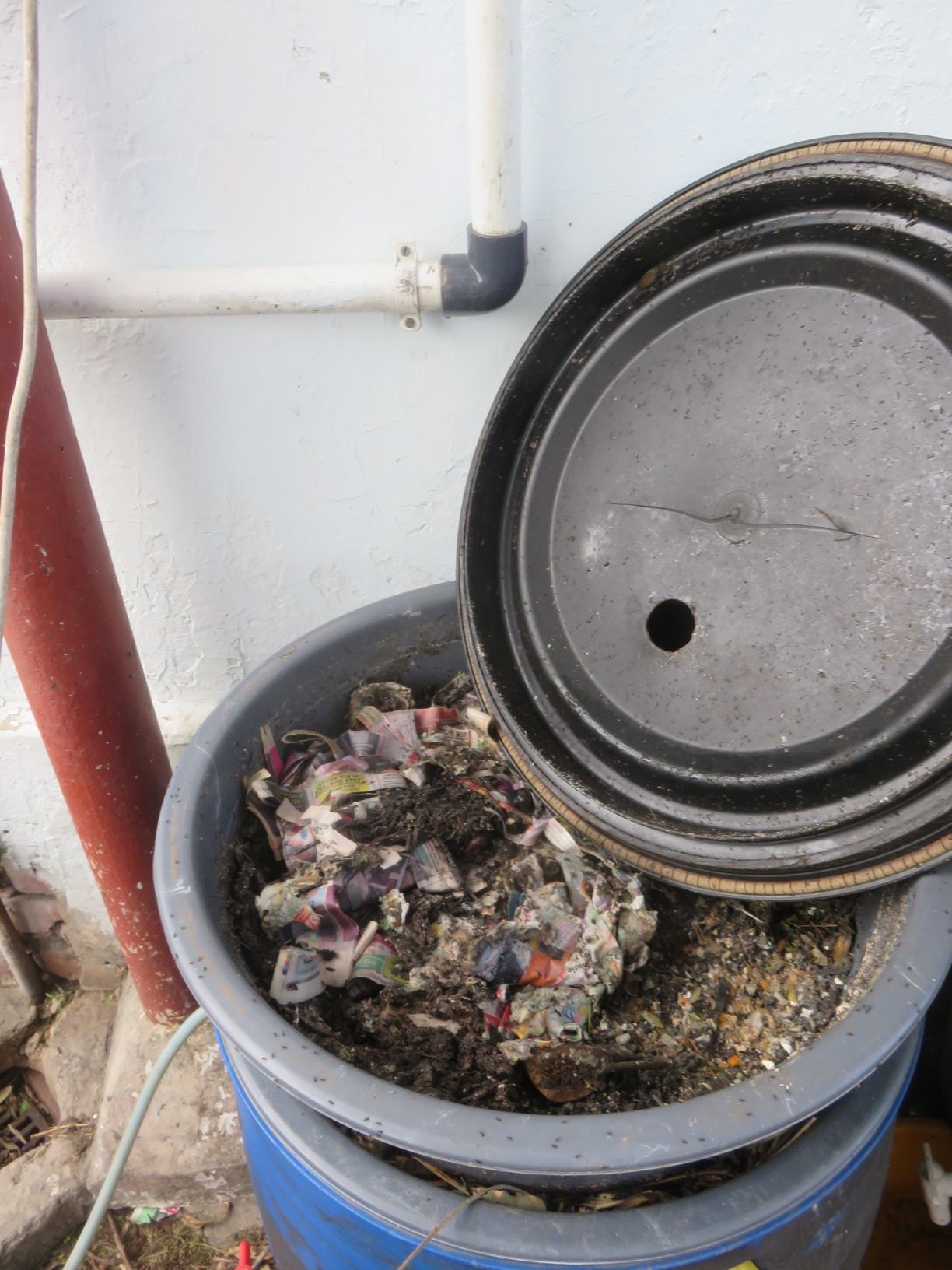 bedding in top worm farm seen with lid off bedding in top worm farm seen with lid off |
The worm bin bowls were of course perforated with drill holes to allow the gray water to pass through into the surge tank. It is not legal to allow gray water to stand and breed mosquitoes. I was worried by the number of them, but found that a plastic shopping bag (the yellow packet) stuffed into the holes at the side of the tank stopped mosquito access to the surge tank and solved the problem. Its that simple. In the beginning I put plenty of organic material as bedding and one handful of worms in the bins. Three months later they had multiplied so much I had to remove most of them to seed other worm bins ! They were also the fattest worms I've seen outside of a pure fecal culture.Those interested in earth worm farming should consult my husband's website. He has been earth worm farming for twenty years and the worm website was ranked in the top forty composting websites globally, so its informative and there is no hard sell. You can also purchase his small very reasonably priced paperback book which has everything you need to know about earth worm farming and if you wish, making it into a profitable business, as he did.
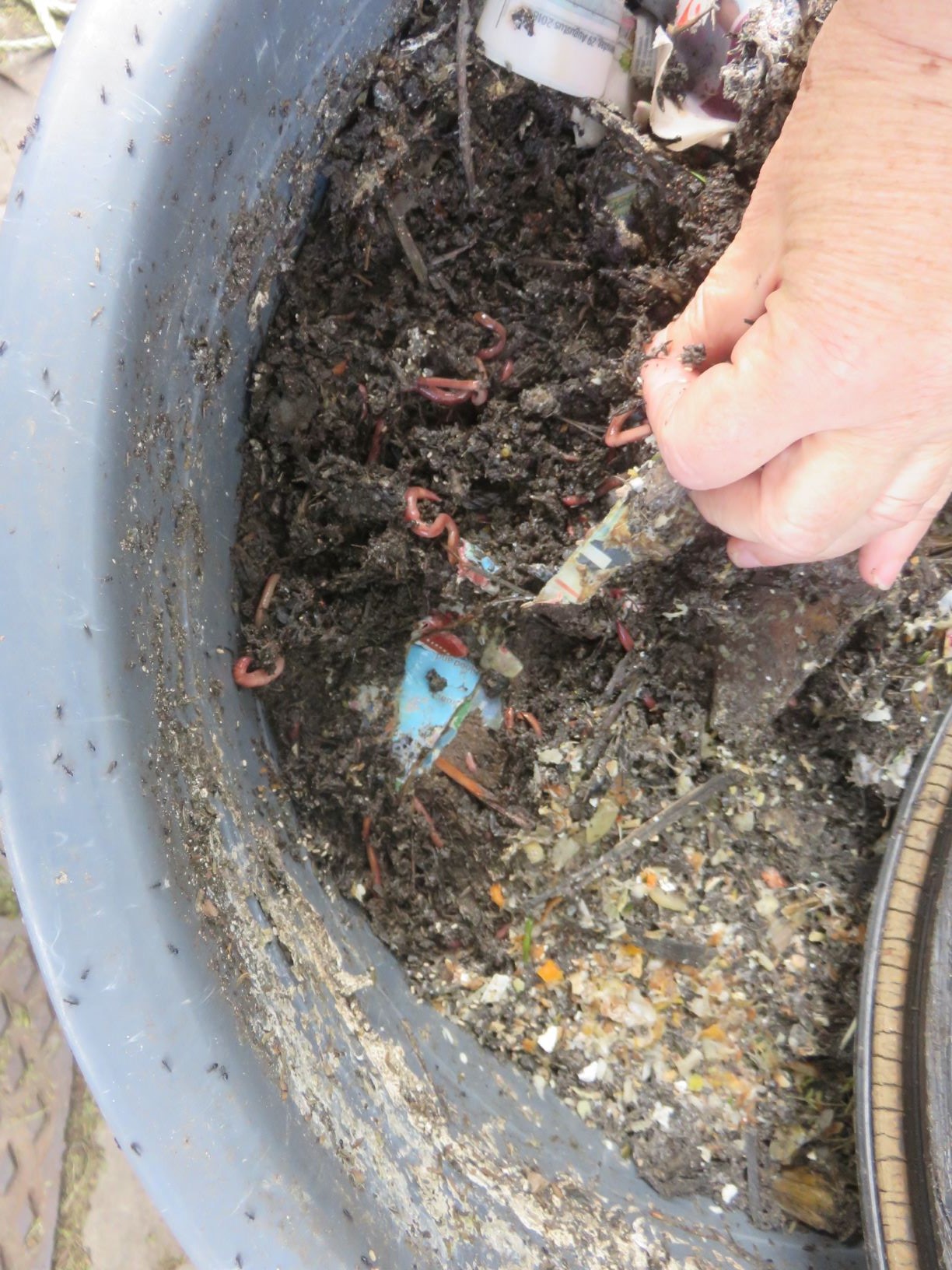 the gray water fed worms looking healthy the gray water fed worms looking healthy |
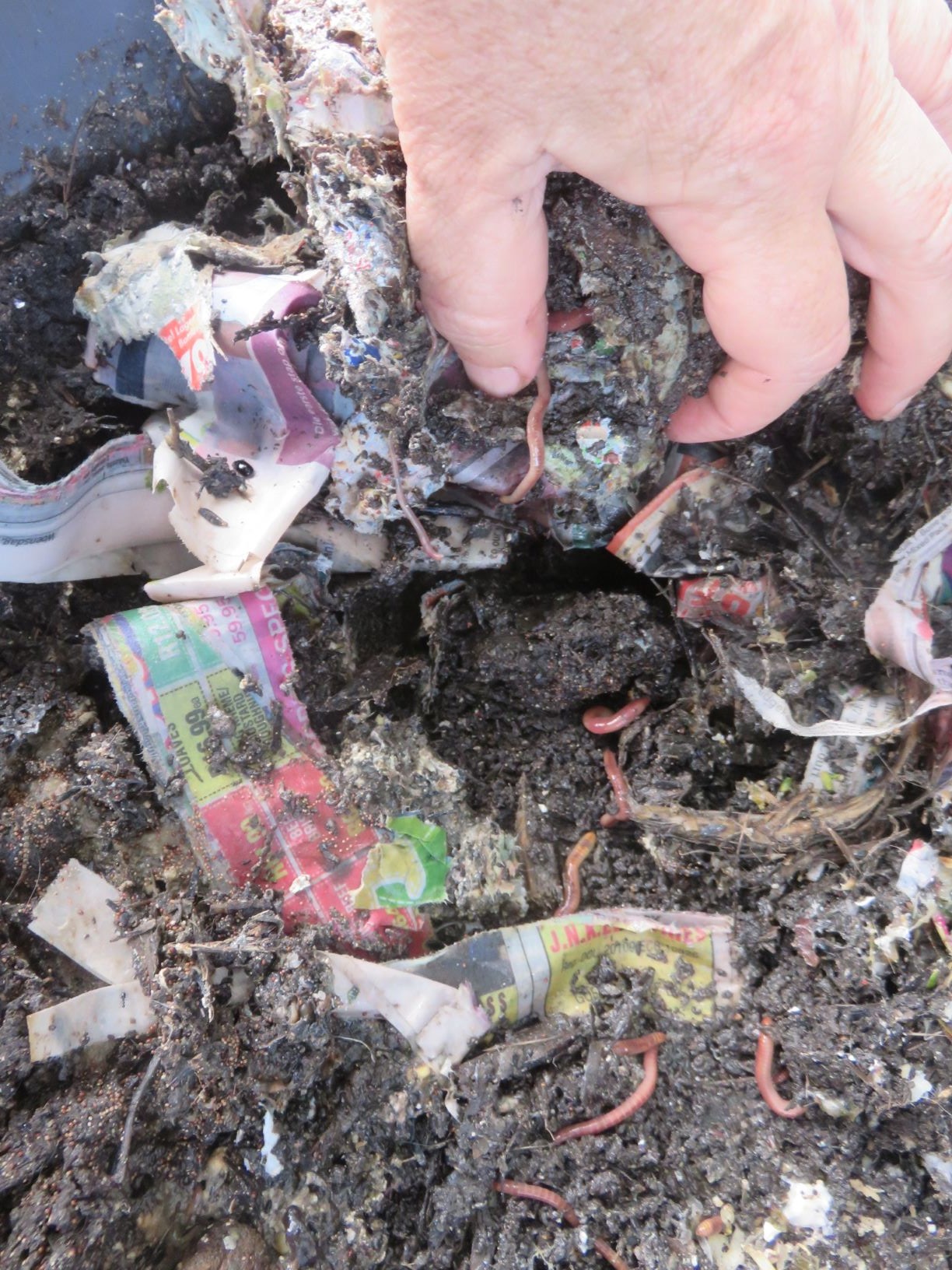 and they are multiplying like... earth worms and they are multiplying like... earth worms |
The worm bins above show the worms after 'thinning' to seed other bins. I removed about two thirds of them. Then two weeks ago I made a terrible mistake. For the first time in the months of having this system, I lost focus and I poured boiling water down the sink. I was draining some spaghetti ! So the photographs this morning are taken after half of the remaining worms were presumably dispatched by my careless action. I got such a shock I hope it has imprinted itself in my mind. I'm thinking of putting a reminder notice over the kitchen sink. In my next system the surge tank will come before the worms and hold enough water for a peak flow to cool off first in case someone forgets. Beyond that we used my home made potassium based soap, most of the time. The worms just love the small bits of wet food and nutritious liquids coming down the pipe and the constant water supply. Their number should give you an idea of how the worms thrive and reproduce in this context. There is no smell as there can often be with gray water. The tank is full of stone to prevent worms from drowning if they fall through the bottom bin, though the holes are tiny, and to provide area for bacterial colonization. From the tank the gray water passes out of a small house into my lush gray water grow beds.
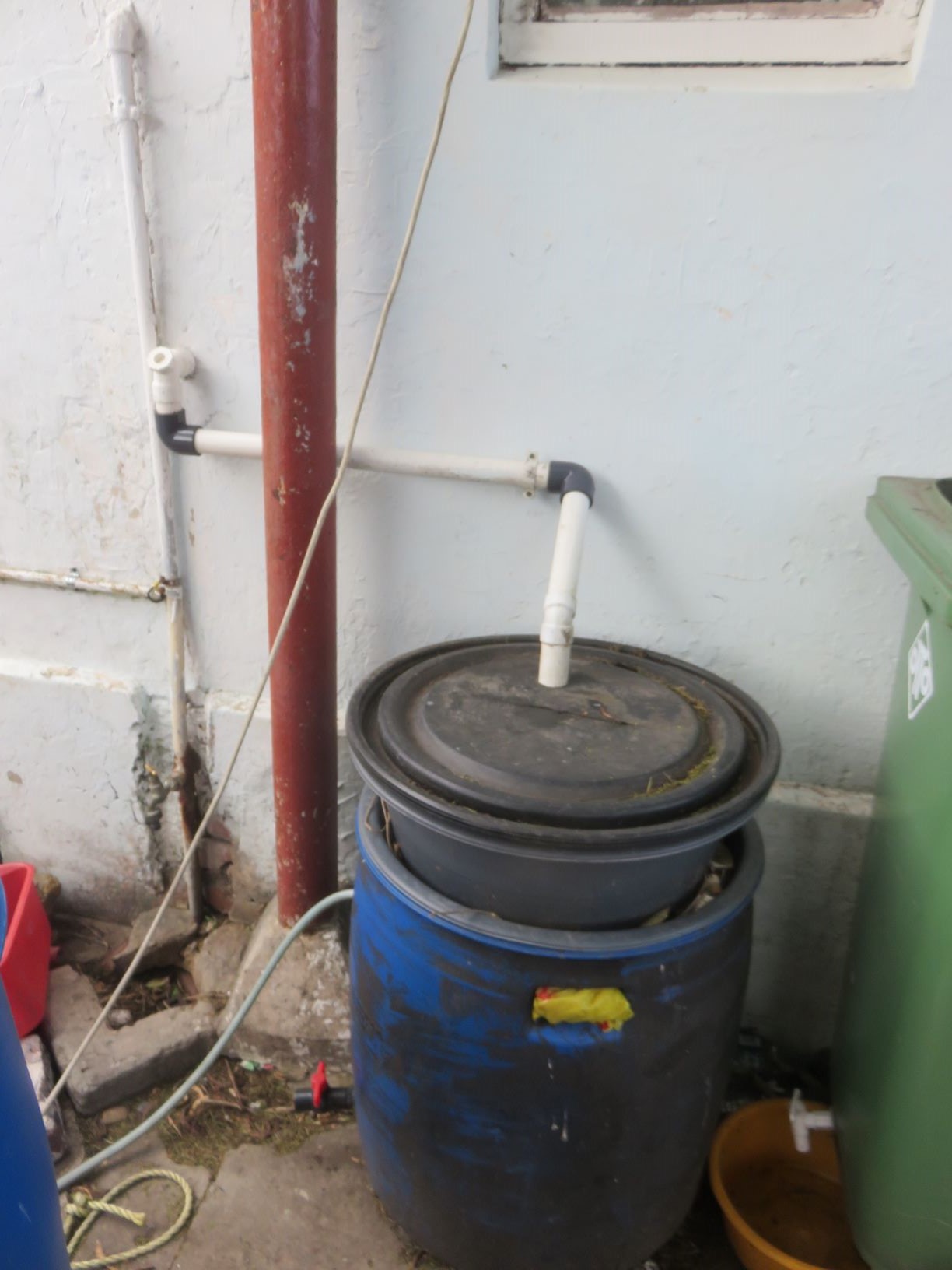 Here you can see the inflow to the worm bin outside the kitchen window. The waste pipe used to drop straight down into the drain at the left. Coming out of the barrel is the pale green outflow hose to the grow beds, and a red tap or flushing valve for removing sediment from the tank.
Here you can see the inflow to the worm bin outside the kitchen window. The waste pipe used to drop straight down into the drain at the left. Coming out of the barrel is the pale green outflow hose to the grow beds, and a red tap or flushing valve for removing sediment from the tank.------
home page for links to lots of information on natural and restorative gardening
------
------
How to start a profitable worm business on a shoestring budget
Restore Nature Newsletter
I've been writing for four years now and I would love to hear from you
Please let me know if you have any questions, comments or stories to share on gardening, permaculture, regenerative agriculture, food forests, natural gardening, do nothing gardening, observations about pests and diseases, foraging, dealing with and using weeds constructively, composting and going offgrid.
What Other Visitors Have Said
Click below to see contributions from other visitors to this page...
More Info 




Good day. My name is Nico, I live in Pretoria. I want to use my greywater from the bathroom, washing machine and kitchen sink directly onto my lawn and …
SEARCH
Order the Kindle E-book for the SPECIAL PRICE of only
Prices valid till 30.09.2023
Recent Articles
-
garden for life is a blog about saving the earth one garden at a time
Apr 18, 25 01:18 PM
The garden for life blog has short articles on gardening for biodiversity with native plants and regenerating soil for climate amelioration and nutritious food -
Cape Flats Sand Fynbos, Cape Town's most endangered native vegetation!
Apr 18, 25 10:36 AM
Cape Flats Sand Fynbos, a vegetation type found in the super diverse Cape Fynbos region is threatened by Cape Town's urban development and invasive alien plants -
Geography Research Task
Jan 31, 25 11:37 PM
To whom it may concern My name is Tanyaradzwa Madziwa and I am a matric student at Springfield Convent School. As part of our geography syllabus for this
"How to start a profitable worm business on a shoestring budget
Order a printed copy from "Amazon" at the SPECIAL PRICE of only
or a digital version from the "Kindle" store at the SPECIAL PRICE of only
Prices valid till 30.09.2023







